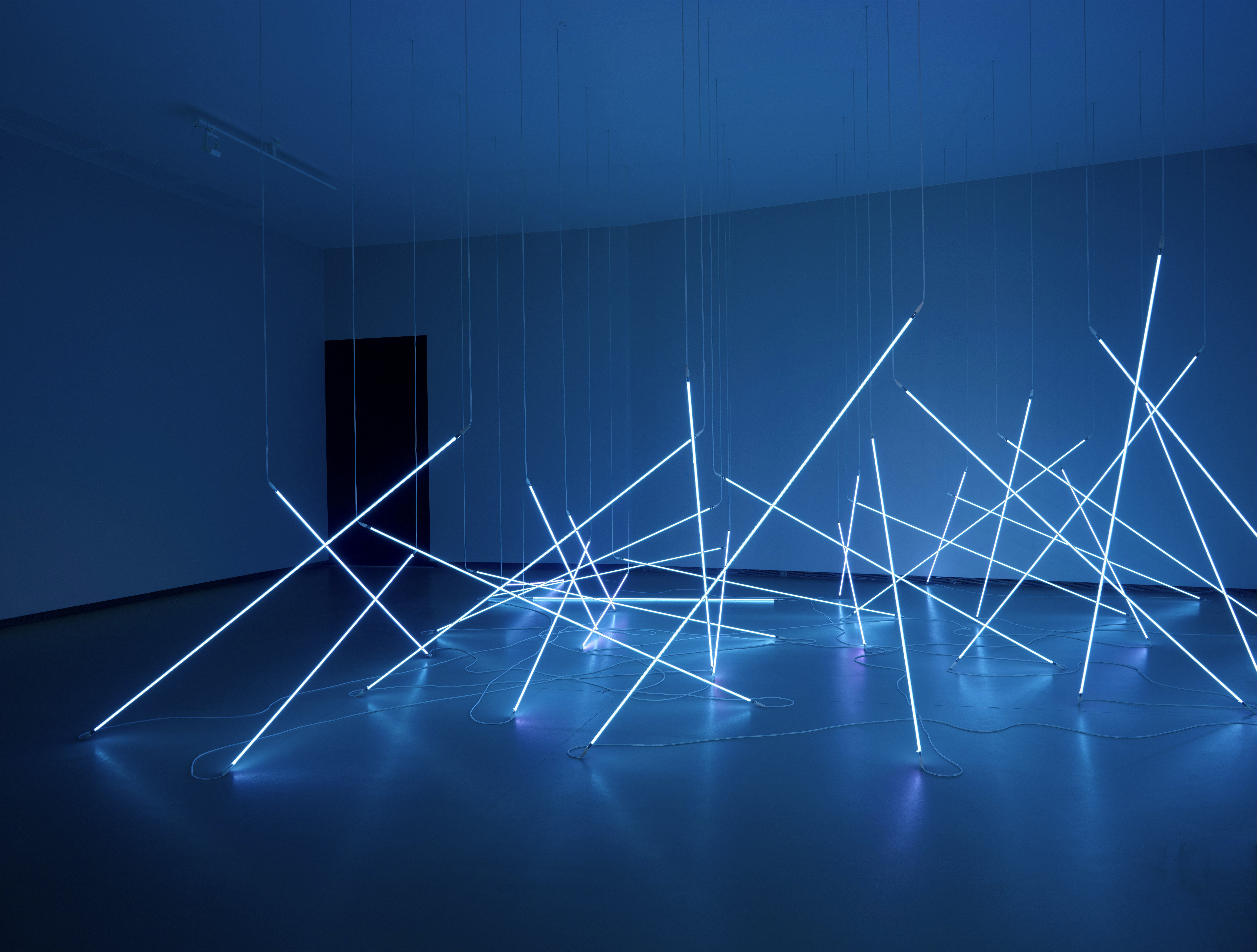François Morellet
François Morellet was born in 1926 and died in 2016 in Cholet, France. He began his career in the early 1950s and then explored the worlds between abstraction and derision. Nicknamed and self-titled the “rigorous joker,” he developed a radical body of work forged by discipline and rife with jocularity. From very early on, he strove to distance himself as much as possible from all subjectivity and romanticism traditionally associated with the figure of the demiurge-artist. Confining himself to specific methods and restrictions, to apply them and better get around them, he celebrated freedom within the rules. Square canvases, adhesive tape, neon lights, natural or high-tech components – he used anything and everything in his artistic expression, experimenting with the infinite power of combinations and sheer happenstance in material neutrality and creative anonymity.
His work is celebrated and recognised worldwide (nearly 500 monographic exhibitions to date) and was exhibited at the Dia Art Foundation in New York, USA, in November 2017. Morellet’s works can be found in the collections of the Louisiana Museum in Humlebaek, Denmark; the Kunstmuseum in Düsseldorf and the Neue Nationalgalerie in Berlin, Germany; the Tate Modern in London, United Kingdom; the Stedelijk Museum in Amsterdam, the Netherlands; the Kunsthaus in Zürich, Switzerland; the MNAM – Centre Pompidou in Paris, France and other key institutions. He produced commissioned works in France and Germany and, in 2010, was commissioned by the Musée du Louvre to create the permanent Lefuel Staircase window installations, L’Esprit d’escalier.


















